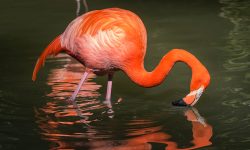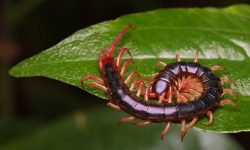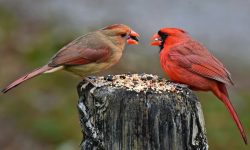Scorpions are ancient predators that have survived on Earth for hundreds of millions of years. Their ability to adapt to deserts, forests, mountains and humid jungles makes them one of the most successful arthropods on the planet. Understanding what scorpions eat helps reveal how these secretive animals thrive in the dark and why they remain such efficient nighttime hunters. Although their diet varies between species and habitats, scorpions share a few key feeding strategies that allow them to hunt effectively in harsh environments.
Scorpions rely heavily on their sensitive hairs, impressive strength and venomous stingers to subdue prey. Whether they are hiding beneath rocks or waiting beside a burrow entrance, scorpions depend on subtle vibrations to detect movement. Their patience, combined with ambush-style hunting, helps them conserve energy while capturing prey that often includes fast, agile or well-defended insects. Once they catch their target, they rely on their pincers and venom to immobilize it before feeding.
This article explores 20 foods scorpions hunt in the wild, offering a clear picture of the prey that sustains them across different landscapes. From insects to small vertebrates, their diet reflects the remarkable adaptability that has allowed scorpions to persist for millions of years.
Understanding the Scorpion Diet

Scorpions are obligate carnivores, meaning they rely entirely on animal prey for nutrition. Their diet consists mostly of insects, spiders and small arthropods, but larger scorpions can take on significant prey for their size. Their digestive system is designed to consume liquefied food, so they inject powerful digestive fluids that break down prey tissue externally before sucking up the nutrients. This feeding strategy allows them to extract as much energy as possible from each meal.
Because scorpions live in environments where food is unpredictable, they are opportunistic hunters. When prey is abundant, they may eat frequently; when scarce, they can survive weeks or even months without feeding. Their slow metabolism and ability to absorb moisture from prey help them endure harsh conditions that would be impossible for many other predators.
Depending on their habitat—desert dunes, forest leaf litter, rocky hillsides or tropical woodlands—scorpions adapt their diet to whatever they can catch. Some species specialize in particular prey types, while others maintain a broad diet. Understanding this flexibility reveals why scorpions have survived dramatic environmental changes through history.
20 Foods Scorpions Hunt in the Wild
1. Crickets
Crickets are one of the most common prey items for scorpions. Their size, movement and abundance make them ideal targets, especially in grasslands and forest edges. Scorpions use their pincers to grab the cricket before injecting venom to subdue it quickly.
Crickets provide a balanced combination of protein and moisture, which is essential for energy and hydration. Their chirping and rapid movements also make them easy for scorpions to detect. These insects often wander into scorpion shelters during nighttime hours.
In arid regions where food can be unpredictable, crickets serve as an important and frequent nutritional source.
2. Beetles
Beetles are plentiful in many ecosystems, and scorpions hunt them regularly. Despite their hard exoskeletons, beetles are rich in nutrients. Scorpions use their powerful pincers to break or crush the beetle’s protective shell before feeding.
Ground beetles, darkling beetles and other soil-dwelling species are especially common prey. Their slow or predictable movement makes them easy to capture. Scorpions often find beetles under logs, rocks and leaf litter.
Beetles supply long-lasting energy because of their dense body composition, making them valuable in harsh habitats.
3. Grasshoppers
Grasshoppers are fast and strong jumpers, but scorpions still manage to catch them using ambush tactics. They wait for grasshoppers to land or move close before striking with their pincers and venom.
Grasshoppers provide a large, protein-rich meal. Their bodies contain significant muscle tissue and moisture, ideal for sustaining a scorpion for several days. They are especially common in dry grasslands and savannas.
Scorpions also take advantage of injured or molting grasshoppers, increasing their hunting success.
4. Cockroaches
Cockroaches are another frequent prey item due to their abundance and nocturnal activity. Scorpions often share living spaces with roaches in warm, sheltered areas, increasing their hunting opportunities.
Roaches may be fast, but scorpions use vibration detection to locate them even in total darkness. Once caught, a roach provides a filling, nutrient-dense meal.
Because roaches thrive in many climates, they help sustain scorpion populations year-round.
5. Spiders
Scorpions commonly hunt spiders, especially ground-dwelling species. Their venom and pincers help them overpower spiders quickly, preventing defensive bites. Some species even target web-building spiders resting outside their webs.
Spiders offer lean protein and are relatively easy for scorpions to digest. They are also abundant in forest floors, desert shrubs and rocky outcrops.
This predator-prey relationship helps maintain arthropod balance in many ecosystems.
6. Ants
Ants are small but abundant, making them a frequent snack for scorpions. They often travel in predictable trails, allowing scorpions to wait nearby and capture individuals that stray from the group.
Scorpions target ants carefully, avoiding aggressive or stinging species when possible. Their quick strikes prevent retaliation from ants that might bite or spray chemicals.
Ants contribute important protein and moisture, especially during seasons when larger prey is scarce.
7. Termites
Termites live in large colonies, giving scorpions easy access to entire clusters of prey. When scorpions dig into termite galleries, they can consume dozens at a time. Termites’ soft bodies make them very easy to eat.
Termites are rich in moisture, helping scorpions stay hydrated in dry environments. They also provide a steady supply of energy because of their abundance.
During termite swarming seasons, scorpions often become more active to take advantage of the surplus food.
8. Caterpillars
Caterpillars are soft-bodied and slow-moving, making them ideal prey for scorpions. Their plump bodies offer high moisture and energy. Scorpions easily immobilize them with minimal venom.
Caterpillars are more common in humid forests, where scorpions roam beneath the leaf litter. Their predictable feeding behavior on leaves helps scorpions locate them easily.
Because caterpillars develop seasonally, they provide a nutritious food bonus during certain months.
9. Moths
Scorpions catch moths when they land on the ground or brush against vegetation. Although moths can fly, they are vulnerable when resting during nighttime hours.
Scorpions seize them quickly with pincers before stinging. Moths provide moderate nutrients and are especially helpful for young scorpions.
Their nocturnal activity aligns perfectly with scorpions’ hunting hours, making moths common prey in many habitats.
10. Flies
Grounded or resting flies are easy prey for scorpions. Although flies can escape quickly, their moments of stillness give scorpions time to attack. Scorpions often catch flies hidden in crevices or under foliage.
Flies offer hydration and moderate protein, making them ideal small meals between larger hunts. They are widely available in warm regions.
Their unpredictable movement helps scorpions sharpen their reaction skills.
11. Crustaceans (for Desert Rain Scorpions)
Certain scorpions living near streams or coastal regions feed on tiny crustaceans like amphipods or small freshwater shrimps. These prey items provide moisture and minerals.
Scorpions capture them by wading into shallow water or waiting at the edge. Their strong pincers help them hold slippery prey tightly.
Crustaceans are especially important where insect prey is limited.
12. Millipedes
Millipedes are slow but possess chemical defenses. However, many scorpions tolerate these toxins and eat millipedes without issue. Their elongated bodies offer significant nutrition.
Scorpions typically target smaller millipede species to avoid excessive defensive chemicals. Once immobilized, millipedes provide moisture and energy.
They are abundant in humid, decaying environments, making them a reliable prey source.
13. Centipedes
Centipedes are fast, aggressive and venomous, but large scorpions often overpower them. These battles can be intense, but the reward is a high-protein, energy-rich meal.
Scorpions strike quickly to avoid the centipede’s venomous bite, using their own venom to neutralize the threat. Large desert species are especially known for hunting centipedes.
Centipedes are dangerous prey, but scorpions are equipped for the challenge.
14. Small Lizards
Some larger scorpion species hunt small lizards when available. Lizards provide a substantial meal, packed with protein and moisture. This prey is more common in deserts and rocky regions.
Scorpions ambush lizards by hiding near burrow entrances or using terrain for cover. Their venom and powerful pincers help secure the reptile before it escapes.
These rare but valuable meals support scorpions during times of high energy demand.
15. Small Snakes (Very Small Species)
Although rare, some large scorpions have been observed feeding on small juvenile snakes. They use rapid stings to immobilize the reptile before feeding.
Snakes offer dense protein, making them a high-reward prey item. Scorpions exploit moments when snakes are vulnerable, such as after shedding or emerging from hiding places.
These interactions showcase the scorpion’s surprising strength and versatility.
16. Frogs (Tiny Species)
Certain scorpion species living near wetlands may capture small frogs or froglets. These prey items offer moisture and essential nutrients.
Scorpions typically hunt frogs during nighttime when amphibians are most active. They rely on stealth and quick strikes to prevent escape.
Frogs serve as an occasional but valuable food source, especially for large-bodied scorpions.
17. Small Rodents (Rare)
In rare cases, the largest scorpions—such as emperor scorpions—may prey on newborn or extremely small rodents. These events are uncommon but demonstrate the scorpion’s capability.
Scorpions overpower small rodents with strong pincers and multiple stings. The meal provides massive caloric value.
Rodent predation usually occurs in environments with high competition for insects.
18. Worms
Earthworms and small soil worms are easy targets for scorpions. Their soft bodies offer hydration and are effortless to digest.
Scorpions detect worms through vibrations and often dig shallow holes to capture them. Worms are especially important in moist or forested environments.
Their availability helps scorpions maintain stable nutrition year-round.
19. Other Scorpions
Scorpions sometimes hunt smaller scorpion species, particularly during food shortages. Cannibalism also occurs among juveniles or during territory disputes.
This behavior provides high-protein nutrients and may help reduce competition.
Although risky, scorpions are capable of overpowering other individuals with speed and venom.
20. Carrion
When live prey is scarce, scorpions occasionally feed on dead insects or small animals. Their digestive enzymes allow them to break down older food sources efficiently.
Carrion is not preferred, but scavenging helps scorpions survive extreme droughts or cold snaps. They feed cautiously to avoid parasites or harmful bacteria.
Scavenging plays a small but important role in their survival strategy.
FAQs About What Do Scorpions Eat
What do scorpions eat most often?
Mainly insects such as crickets, beetles and roaches.
Do scorpions eat plants?
No. They are strict carnivores.
Can scorpions survive without food?
Yes, many can survive weeks or months due to slow metabolism.
Do scorpions hunt at night?
Yes. They are primarily nocturnal.
Do scorpions drink water?
They absorb most moisture from prey but may drink small droplets.
Are scorpions aggressive hunters?
They are ambush predators, relying on stealth and patience.
Do baby scorpions eat the same foods?
They eat smaller versions such as tiny insects or small larvae.
Can scorpions eat rodents?
Large species may occasionally eat newborn mice.
Do scorpions use venom for every hunt?
Most of the time, especially with larger or resistant prey.
Are scorpions beneficial?
Yes. They help control insect populations naturally.
Final Thoughts
Scorpions may appear simple, but their diet reveals a predator shaped by millions of years of evolution. By understanding what scorpions eat, we gain insight into their hunting strategies, ecological impact and survival abilities. Whether catching crickets in desert sands or stalking beetles beneath leaf litter, scorpions play a silent but important role in maintaining balance within ecosystems. Their diet reflects resilience, adaptability and precise efficiency—qualities that have helped them endure on Earth far longer than most other creatures.






